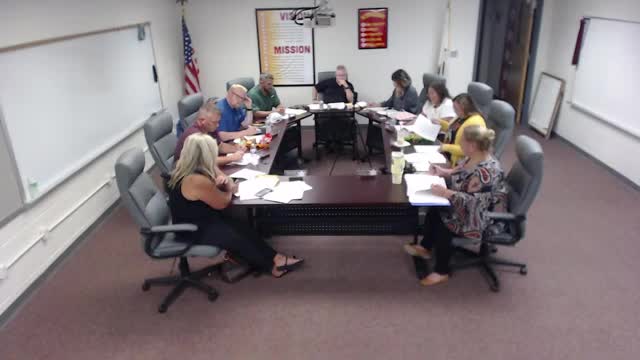Future of education funding hangs in the balance
September 24, 2024 | Murphysboro CUSD 186, School Boards, Illinois
This article was created by AI summarizing key points discussed. AI makes mistakes, so for full details and context, please refer to the video of the full meeting. Please report any errors so we can fix them. Report an error »

During a recent government meeting, discussions centered on the future of evidence-based funding (EBF) for education, particularly in light of ongoing challenges faced by tier 1 schools. A representative highlighted the uncertainty surrounding anticipated funding levels over the next few years, noting that while there has been a historical commitment to increase funding—citing an additional $350 million in previous years—there remains a lack of clarity on future allocations.
The representative emphasized that their school district continues to operate at the lowest funding tier, which complicates efforts to achieve financial adequacy. Despite receiving the largest share of funding designated for tier 1 schools, concerns linger about the sustainability of this support, especially as the state adjusts its funding formulas.
The conversation also touched on the impact of federal ESSER funds, which have provided a financial cushion, allowing for timely payments and operational stability. However, the representative recalled a time when budget uncertainties raised fears about the district's ability to remain open.
Looking ahead, the representative expressed hope that additional funding would be appropriated annually to support schools until they reach adequacy, aligning with the goals of the Vision 2030 initiative. They also mentioned their involvement in the Vision 2030 committee and previous testimony before the House Appropriations Committee regarding the extension of EBF funding.
Furthermore, the meeting underscored the importance of initiatives aimed at improving student attendance, which directly influence funding designations and revenue streams. The representative acknowledged disparities in funding adequacy across different districts, particularly noting that some colleagues operate at 150% adequacy due to higher property tax bases.
Overall, the discussions highlighted the ongoing challenges and complexities of educational funding in Illinois, with a clear call for continued investment to ensure equitable access to resources for all schools.
The representative emphasized that their school district continues to operate at the lowest funding tier, which complicates efforts to achieve financial adequacy. Despite receiving the largest share of funding designated for tier 1 schools, concerns linger about the sustainability of this support, especially as the state adjusts its funding formulas.
The conversation also touched on the impact of federal ESSER funds, which have provided a financial cushion, allowing for timely payments and operational stability. However, the representative recalled a time when budget uncertainties raised fears about the district's ability to remain open.
Looking ahead, the representative expressed hope that additional funding would be appropriated annually to support schools until they reach adequacy, aligning with the goals of the Vision 2030 initiative. They also mentioned their involvement in the Vision 2030 committee and previous testimony before the House Appropriations Committee regarding the extension of EBF funding.
Furthermore, the meeting underscored the importance of initiatives aimed at improving student attendance, which directly influence funding designations and revenue streams. The representative acknowledged disparities in funding adequacy across different districts, particularly noting that some colleagues operate at 150% adequacy due to higher property tax bases.
Overall, the discussions highlighted the ongoing challenges and complexities of educational funding in Illinois, with a clear call for continued investment to ensure equitable access to resources for all schools.
View full meeting
This article is based on a recent meeting—watch the full video and explore the complete transcript for deeper insights into the discussion.
View full meeting
